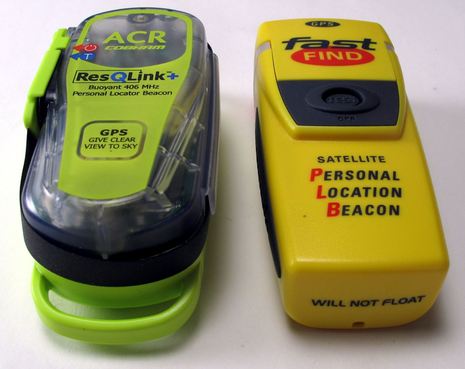Strider wrote:Thanks guys, good useful info

Here's a question. What is the chance of a PLB being smashed in a fall if carried on a shoulder strap/hip belt pocket? How robust actually are they?
Onestepmore wrote:For offshore boating trips you are still required to use a proper EPIRB.
A completely pointless rule. I would happily accept the penalty if rescued from a life threatening situation through using the "wrong device".
I think a heavy fall could damage the device.
I feel happier with ours in the padded Granite Gear pouch - at least it offers a bit more protection
And from Johhny Appleseed:
http://www.ja-gps.com.au/links.aspx"
PLB and EPIRBPLBs are personal locating beacons – they are pocket sized.
EPIRBs are emergency position indicating beacons – they must float to conform to regulations.
State and Territory Marine authorities regulations are now in force. All boats proceeding more than 2nms outside partially smooth waters, are required to carry an EPIRB that meets the Australian/New Zealand Standard 4280.1 (deals specifically with EPIRBs). EPIRBs are required to operate for a minimum of 48 hours, and float upright with antenna clear of the water, when deployed. EPIRBs are designed to operate most effectively, when activated and deployed in the water. Please note that a PLB (see separately) does not conform, and will not be accepted by regulators, as satisfying the Standard 4280.1. PLBs can of course, be carried on vessels as additional safety devices for personal use. This may be particularly helpful in man-overboard situations.
PLBs sold in Australia are required to meet AS/NZS 4280.2 and must operate for a minimum of 24 hours. They can be used on land, in the air, and on water. Although they are required to float, PLBs don’t have to confirm to EPIRB regulations. In a marine environment, a survivor would need to ensure the beacon antenna is supported clear of the water, so that it can operate effectively.
PLBs will not be accepted by the regulators as EPIRBs for the purpose of the emergency beacon regulations. The intent is that boats must be fitted with EPIRBs that meet Part 1 of the Standard 4280. Owners and crews are encouraged however, to carry PLBs in addition to the boat's EPIRB, where conditions and activities may lead to man overboard situations."




